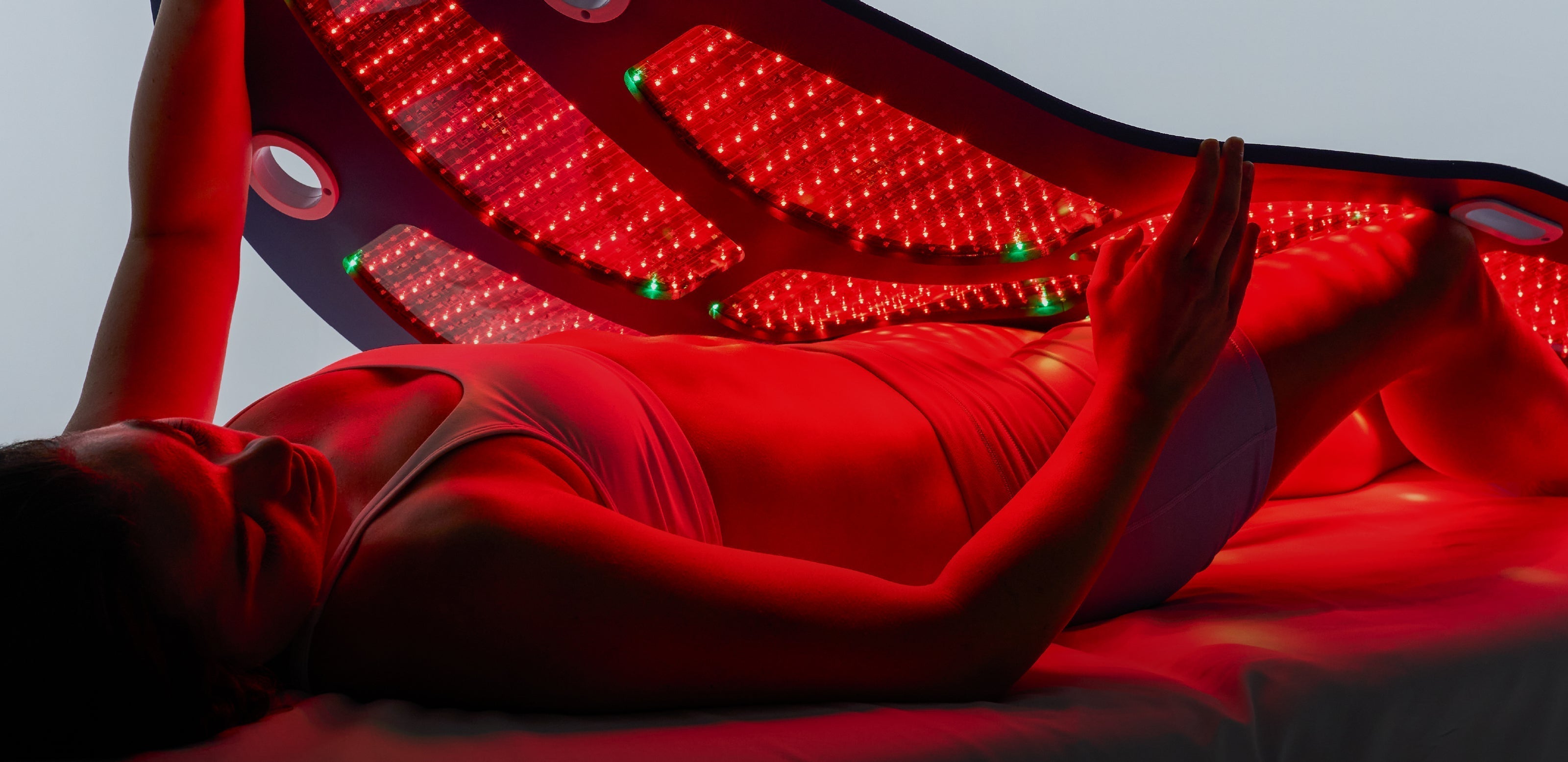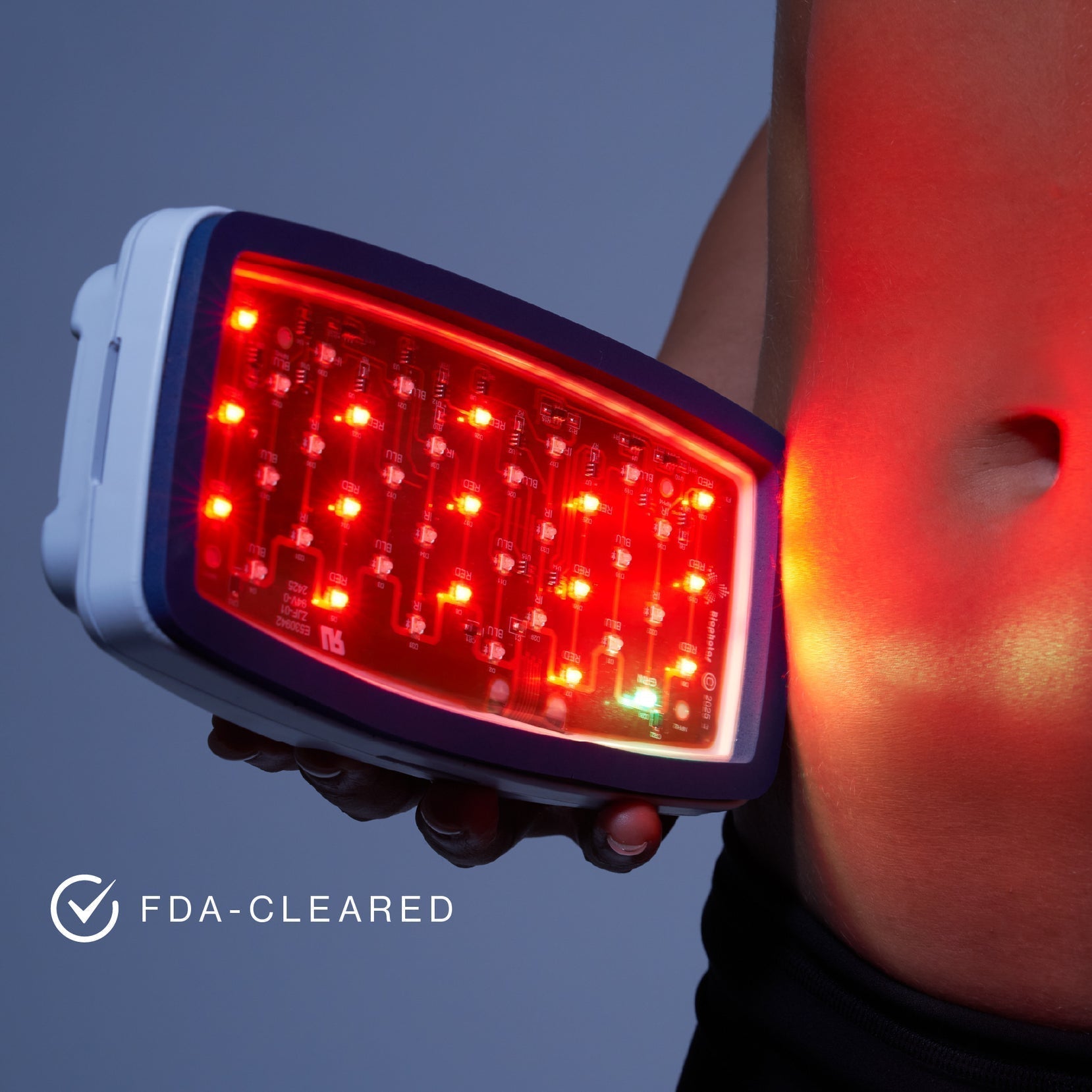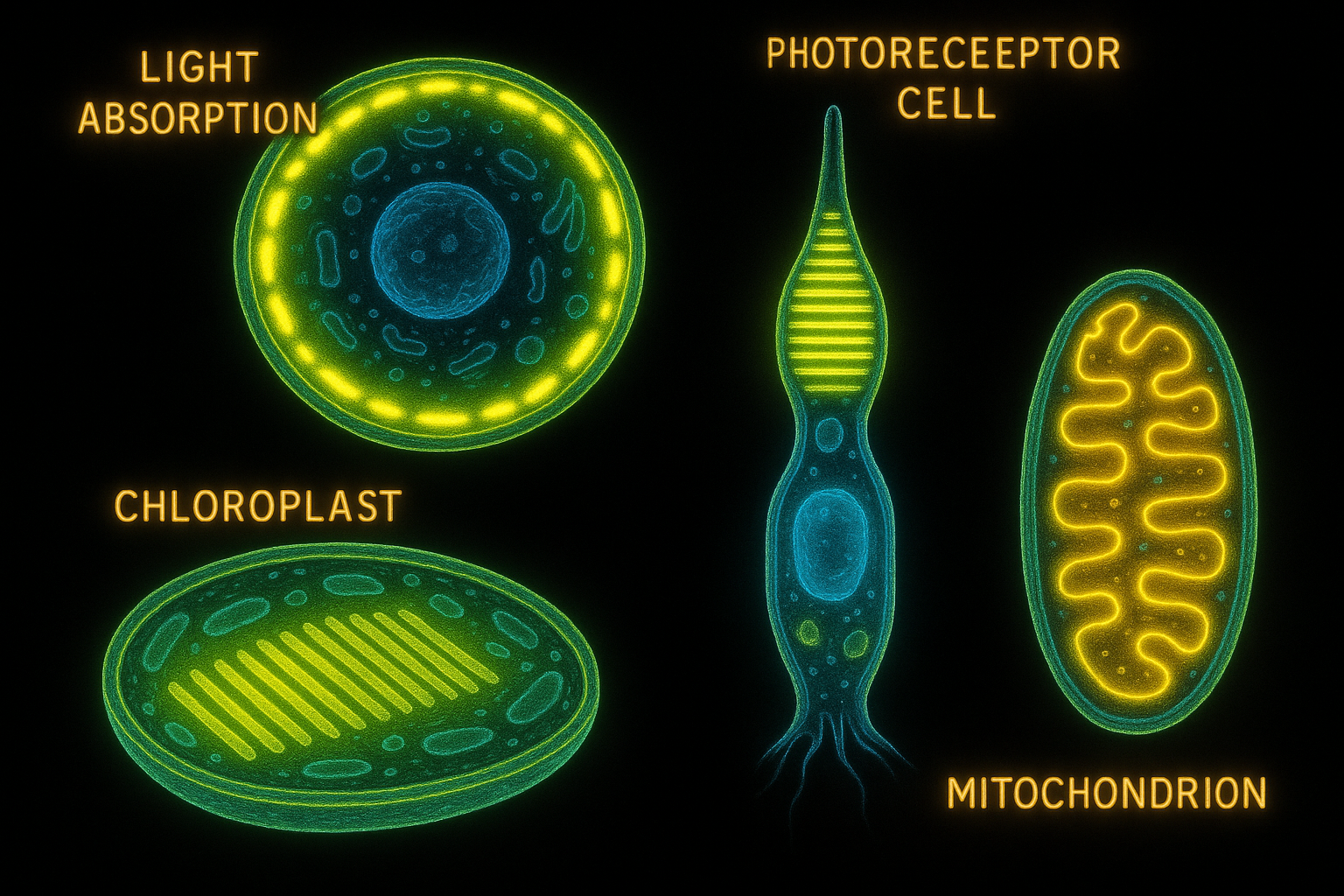
How Light Therapy Works?
The cells in our body contain light-absorbing molecules, known as chromophores, that respond to very specific wavelengths of light. When these molecules absorb light, they trigger beneficial biological effects — from boosting energy production to repairing damaged tissues.
This is the same reason sunlight benefits our body, but LED light therapy is safer and more targeted. Instead of exposing the skin to harmful UV rays, light therapy delivers red, blue, and near-infrared wavelengths in precise doses to improve skin health, speed recovery, and support overall wellness.
The Three Key Wavelengths of Light Therapy
🔵 Blue Light Therapy (465 nm) – Clearer Skin at the Surface
Blue light therapy for acne is one of the most popular uses of LED treatments. It works at the skin’s surface, making it ideal for breakouts and oily skin concerns.
-
Bacterial Control: Blue light kills Propionibacterium acnes, the bacteria responsible for acne breakouts.
-
Sebum Regulation: Helps normalize oil production by calming sebaceous gland activity.
-
Enhanced Healing: Improves local blood flow, supporting faster healing of blemishes and inflamed skin.
This makes blue light therapy excellent for clearing acne, reducing future breakouts, and keeping pores clean — all without damaging healthy skin cells.
🔴 Red Light Therapy (660 nm) – Collagen Boost & Skin Repair
Red light therapy penetrates deeper than blue light, reaching the epidermis and upper dermis where it fuels cellular repair.
-
Anti-Aging Benefits: Stimulates fibroblasts to boost collagen production, reducing wrinkles and fine lines.
-
Faster Tissue Regeneration: Increases ATP production, giving cells the energy they need to repair and renew.
-
Improved Circulation: Enhances blood flow, helping skin look healthier and more radiant.
-
Inflammation Reduction: Reduces swelling, redness, and irritation.
-
Hair Growth Support: Stimulates hair follicles, helping reduce hair loss and encourage new growth.
Regular red light therapy sessions are known to smooth skin texture, reduce visible signs of aging, and accelerate healing of wounds and scars.
🌑 Near-Infrared Light Therapy (880 nm) – Deep Healing & Pain Relief
Near-infrared light therapy penetrates even deeper, targeting muscles, joints, and connective tissue for pain relief and recovery.
-
Deep Tissue Repair: Stimulates mitochondrial activity in muscles and joints, accelerating recovery.
-
Pain & Inflammation Relief: Increases nitric oxide release, improving circulation and reducing pain.
-
Wound Healing & Muscle Recovery: Encourages cell growth and tissue regeneration at deeper levels.
-
Stress & Fatigue Relief: Promotes endorphin release, easing chronic discomfort and muscle tension.
-
Enhanced Circulation: Boosts blood flow to promote faster recovery and tissue repair.
This makes near-infrared light therapy ideal for sports recovery, chronic pain management, and post-injury healing.
✅ Why Wavelength Matters in Light Therapy
Not all light is the same. Red, blue, and near-infrared LED light therapy work because they use wavelengths your cells can actually absorb and respond to. If the wavelength is too short or too long, it won’t penetrate the right depth or trigger the desired cellular response, meaning you won’t see results.
By using clinically proven wavelengths, light therapy ensures real, measurable improvements in skin health, pain relief, and tissue recovery.



Leave a comment
This site is protected by hCaptcha and the hCaptcha Privacy Policy and Terms of Service apply.